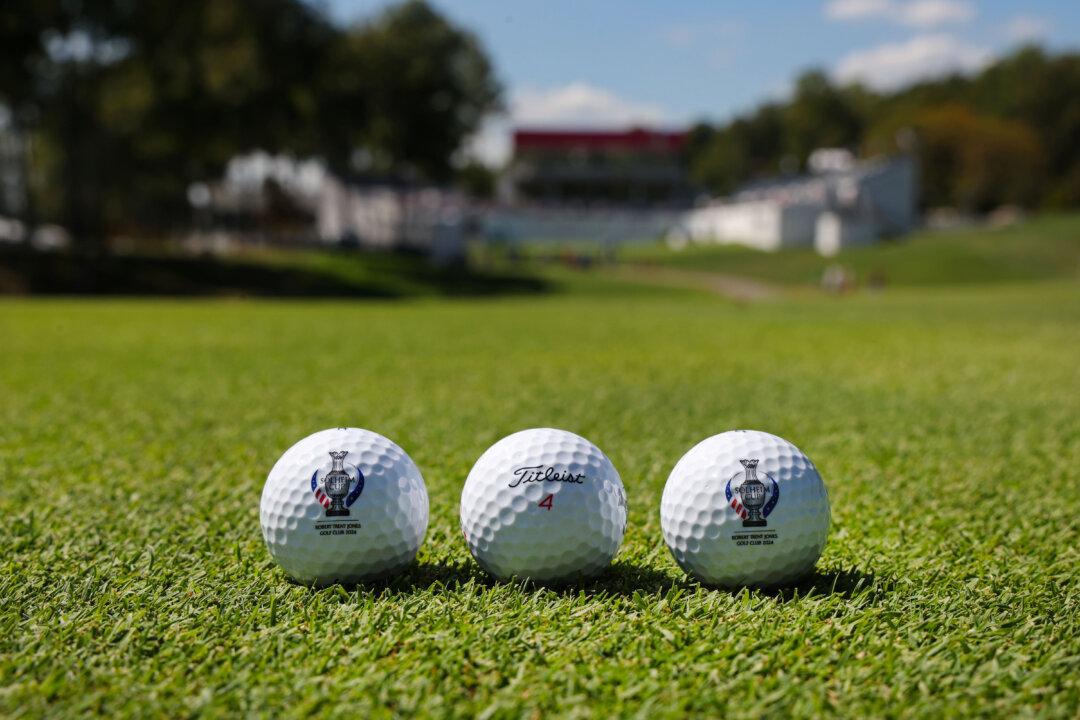One of the enduring issues for golf has been the surging impact that technology has caused on the sport. In its earliest days, golf was played with archaic golf balls stuffed with feathers. Golf clubs then looked like hockey sticks rather than the modern implements used today.
Since golf competitions took root in the late 19th century, there has always been a debate on the various advancements created on the equipment side.
When Bob Jones actively played in the 1920s, the involvement of wooden shafts was commonplace. Shortly after Jones formally retired from competition, the arrival of steel shafts entered the game. In the years to follow, the gains made in golf balls and clubs accelerated. At one time a drive of 250 yards was considered a lengthy tee shot. Today players on the men’s pro golf circuits routinely carry tee shots in excess of 300 yards.
Flashback to 1995, John Daly led driving distance on the PGA Tour with a total of just under 290 yards. In 2024, no less than 103 players had driving distance above 300 yards on the PGA Tour. Augusta National Golf Club, the annual site of the Masters Tournament, had a total length of 6,925 then and played 7,555 yards for the 2024 event.
While Augusta National has the money and land for expansion other classic courses are either unable or willing to follow suit.
The composition of players playing at the global elite level is more attuned to physical fitness with bodies uniformly reflecting that. Swing efficiencies have reached high levels and much of that stems from quality instruction commencing at an early age coupled with ongoing analytics and active competitive schedules starting at a very early age.
The joint rules-making organizations of the USGA and R&A have long expressed concern that distance gains are not healthy for the sport.
After a period of years of studying the subject and reaching out to a wide range of stakeholders including equipment companies and the various pro tour circuits a joint action was announced in December 2023.
For those at the elite levels–specifically the various global pro tours—a golf ball rollback will be implemented starting January 2028. The USGA and R&A went even further in stating that a golf ball rollback will be in effect for all playing the game starting January 2030.
In real terms what would this mean?
The USGA and R&A do not have sweeping jurisdiction beyond the events they administer. A golf ball rollback has neither been praised nor accepted by other key stakeholders, among them the various equipment companies, the PGA Tour, and the PGA of America.
In sum, the USGA and R&A are in the persuasion business and the success of their efforts in rolling back the golf ball is dependent on others walking in lockstep with the solution that’s been announced. Thus far, the sound you hear from those who would be impacted the greatest is crickets.
“Governance is hard. And while thousands will claim that we did too much, there will be just as many who said we didn’t do enough to protect the game long-term,” said Mike Whan, CEO of the USGA in a statement following the announcement.
“But from the very beginning, we’ve been driven to do what is right for the game, without bias. As we’ve said, doing nothing is not an option—and we would be failing in our responsibility to protect the game’s future if we didn’t take appropriate action now.”

Whan’s comments were echoed by his counterpart from the R&A’s CEO Martin Slumbers.
“We are convinced that this decision is one of the key ways of achieving a sustainable future for golf, protecting the integrity of the game and meeting our environmental responsibilities. The measure we are taking has been carefully considered and calibrated while maintaining the ‘one game’ ethos deemed to be so important to the golf industry.
“Importantly, it also keeps the impact on recreational golfers to an absolute minimum. We are acting now because we want to ensure that future generations can enjoy the unique challenge of golf as much as we do.”
The two rules-making organizations do not have ultimate control over what others in the sport ultimately decide. In short—the need for change comes down to the wherewithal to persuade others to implement a correction that others view as overblown.
Tom Fazio, one of golf’s most prominent architects expressed concern recently at a media conference unveiling his latest design at the Reynolds Lake Oconee facility in Georgia.
“I’m not sure it’s going to make much difference for the general public. I certainly don’t want a golf ball that rolled back. I don’t need a golf ball to roll back. You know, I’m moving up to the next tees. So, I think it only affects certain part of the game. And I know there’s a very controversial point of it.
“And I think, yes for the elite player. It is definitely an issue. I see what has happened from the from the Pro V1 of the 90s and today’s players with their strengths and athleticism. I think there’s an issue there, but I don’t think so for the rest of us.”
Originally, the USGA and R&A had offered a split verdict in terms of golf ball usage. In that announcement the two rules-making organizations put forward a proposal only those at the elite level would play a rolled-back golf ball but at the recreational level all would remain as is now. The concept of a bifurcation of the rules received little support and was eventually scrapped for the most recent announcement.
Ultimately, the USGA and R&A will need to garner support from the PGA Tour and the PGA of America—the two most impactful groups that shape the sport in a more direct manner and have considerable standing with the broader golf public.
There is also the very real possibility equipment companies may also bring legal action as the deadline draws closer. This happened in 1990 when the PING company brought action in regard to how the grooves of golf irons were measured. Ultimately, that suit was settled but the shock waves of a future such action weigh heavily on the minds of the USGA and R&A.
Fazio questioned if the solution offered is in search of a problem that’s narrower in scope.

“I’m really interested in how they’re going to do it. And is it going to work in that regard? All I know is that we continue to build forward tees for the majority of our players that need to move up. I think it’s blown out of proportion and it’s only, we have roughly in America, 35 golf tournaments that mean anything. It’s only 35 properties. You know, and the ones that need to do it can fix it. But, lots of things happen in life that change, and you can’t go back to the old way. So, I’m not sure. I’m anxiously awaiting to see what’s going to happen.”
The bigger question is if the equipment companies opt to comply and create a new rolled-back golf ball. And even if they do that, will the general golf population willingly use it or simply continue to want to play the existing ball?
Other questions loom just as large.
Will the PGA of America endorse such a remedy and will the PGA Tour mandate such a solution for the weekly events they conduct? If any of the above opt to withhold such support what impact does that then place on the USGA and R&A in maintaining their role as golf’s rule-makers?
It is likely three of the men’s major championships (Masters, U.S. Open, The Open) will mandate the roll-backed golf ball. It is hard to fathom, but very possible, that pro golfers competing globally could face the real dilemma in having to switch to different golf balls for various events.
Years ago, that was the case when the “British golf ball” (1.62-inch diameter) was permitted—including at The Open. The resulting confusion eventually caused the USGA and R&A to ban the smaller ball in 1990 and use only the American golf ball (1.68-inch diameter).
Should that happen, confusion and ultimately chaos would happen. The general public may not have this issue on the immediate radar screen but having those golfers on board still remains a work in progress. Whan himself admitted that trying to sell something as a rolled-back golf ball is not the easiest thing to do given the public relations dimension—even if the distance lost is minimal for such golfers.
The vantage point from 2024 shows choppy waters brewing.
Batton down the hatches—the perfect storm lies just ahead.







